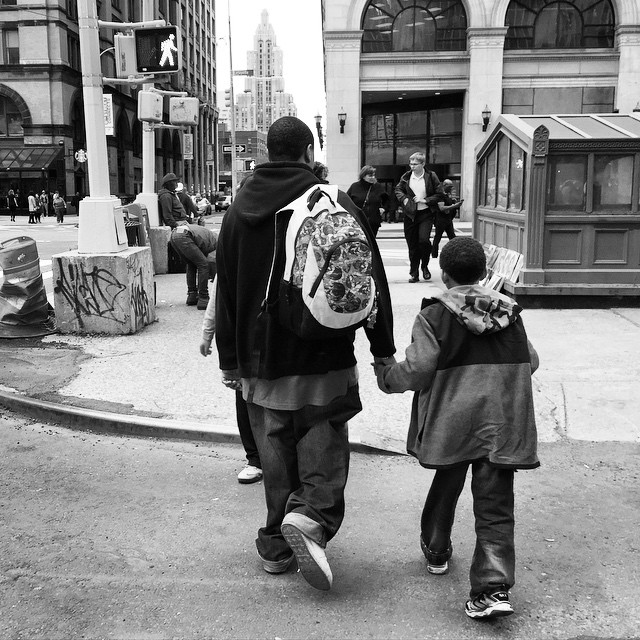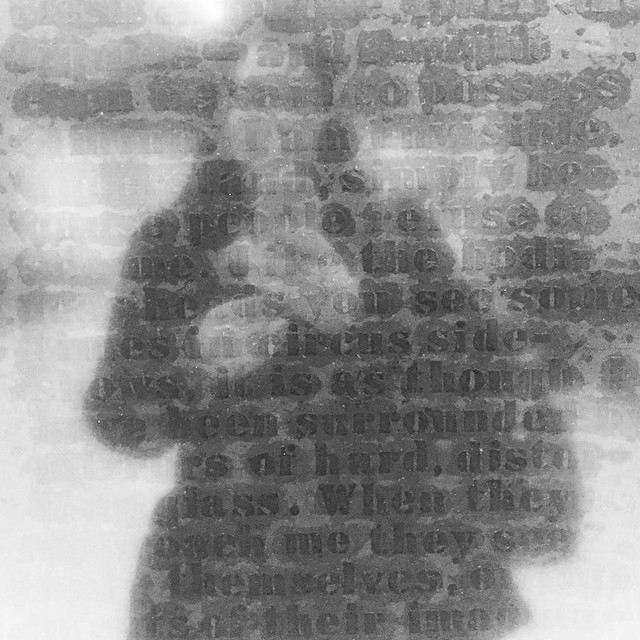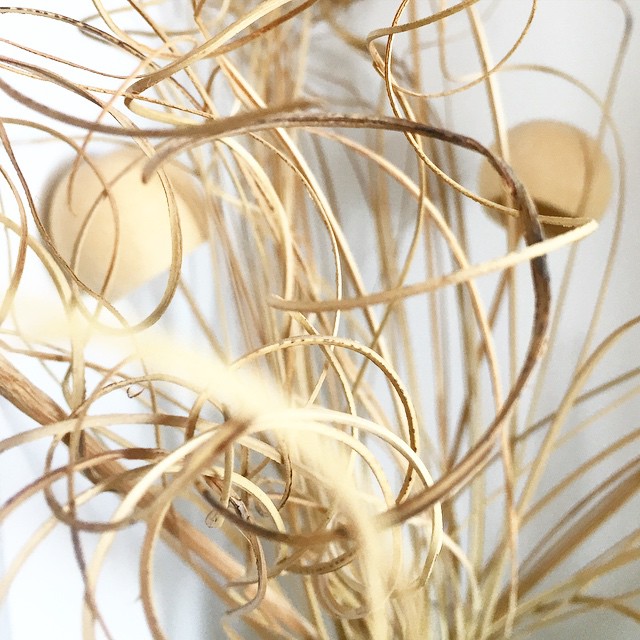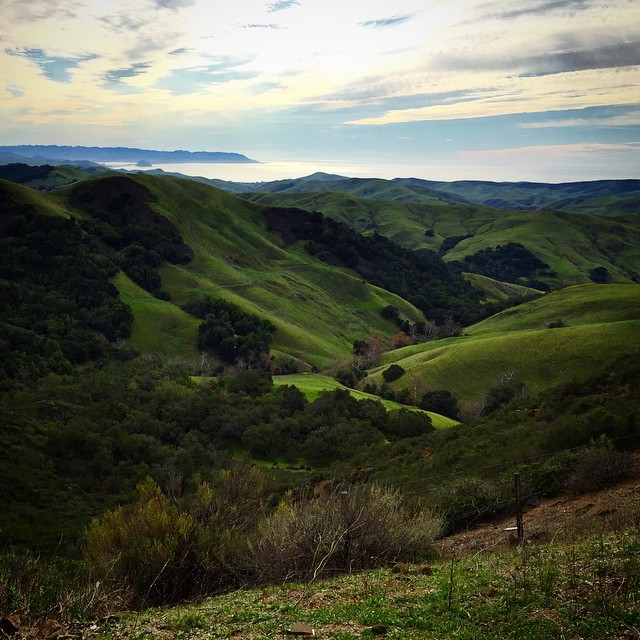Have you ever felt like a New Yorker was angry with you but you had no clue what you did to warrant that treatment? You probably broke one of the unwritten rules. Eventually you learn what those rules are by breaking them enough times, but if you live here long enough, you can easily forget that these rules aren't understood by everyone, which then puts you into the category of an angry New Yorker who gets pissed off at people don't know the unwritten rules. Here's a quick and easy guide to help prevent getting run over or scoffed at by a New Yorker...

We treat sidewalks like streets for feet in NYC and since we don't drive on the left side of the street, we also don't walk on the left side of the sidewalk, unless we're passing someone who's moving too slowly on the right.
2. Speed Walking IS Normal Walking
New Yorkers are almost always in a hurry during the day going from meeting to meeting, and if it's after dark, they're in a hurry to get home. If you're not speed walking, you might as well be obstructing the sidewalk because now we have to find a way to pass you on the sidewalk without getting hit by an oncoming speed walker.
3. Never Stop in the Middle of a Sidewalk, Street, Staircase, or Doorway
You could actually be seriously injured if you don't abide by this unwritten rule. Because we're in such a hurry and we expect everyone to follow the unwritten rules, there's a potential to be accidentally pushed, shoved, or knocked over if you choose to stop in a place where people expect you to keep moving. If you MUST stop to look at your phone, map, or anything else, find the nearest wall or pillar and plant yourself against it, OUT of the stream of moving foot traffic.
4. Stand to the Right on Escalators
If a New Yorker is in a hurry, they expect to be able to walk up the left side on an escalator with room for two. Much like passing you on the sidewalk, they expect people will be standing on the right and making room for those in more of a hurry on the left. That means keeping your shopping bags in front of you to make room as well. If you stand on the left side of an escalator and someone yells at you- it's going to be your fault because you were inconsiderate of those who are in more of a rush than you are.
5. Let People Out Before You Go In
This is a general rule of thumb for occupancy reasons, but especially important when subway doors open or there's major foot traffic in and out of a building. Always let people come outside before you head inside, besides, it makes you look really nice and friendly when you hold a door open and let someone else out first. Don't expect a New Yorker to hold a door for you, though, they may not even see you there.
6. Always Make Room for Others on Sidewalks
You want to stand next to your friends to talk to them while you're walking together, but if you're on a 2 person sidewalk, and that means taking up the entire sidewalk together- you're creating a hazard that forces other people to go into the street or to just stop in front of you because you decided to hog the sidewalk.
7. Beware of Bicyclists
Despite the bike traffic rules that are often ignored and dismissed by bikers, as a pedestrian, you have the ability to stop faster than they do at full speed, and you will inevitably encounter bicyclists going the wrong way on a One Way street. Always look BOTH ways before crossing a street, no matter what the traffic sign says, and keep an eye out for bicycles, not just cars.
8. Obey Crosswalks
Just because a New York resident looks to be dashing across an intersection at a red light, doesn't mean it's a good idea for a visitor. Visitors are often on sensory overload in the city and tend to miss the subtle things an experienced New Yorker is highly attuned to when dashing across red lights. This is one case where it's not wise to follow the lead of a local.

New York's Unwritten Rules of Foot Traffic:
1. Walk on the Right Side of the SidewalkWe treat sidewalks like streets for feet in NYC and since we don't drive on the left side of the street, we also don't walk on the left side of the sidewalk, unless we're passing someone who's moving too slowly on the right.
2. Speed Walking IS Normal Walking
New Yorkers are almost always in a hurry during the day going from meeting to meeting, and if it's after dark, they're in a hurry to get home. If you're not speed walking, you might as well be obstructing the sidewalk because now we have to find a way to pass you on the sidewalk without getting hit by an oncoming speed walker.
3. Never Stop in the Middle of a Sidewalk, Street, Staircase, or Doorway
You could actually be seriously injured if you don't abide by this unwritten rule. Because we're in such a hurry and we expect everyone to follow the unwritten rules, there's a potential to be accidentally pushed, shoved, or knocked over if you choose to stop in a place where people expect you to keep moving. If you MUST stop to look at your phone, map, or anything else, find the nearest wall or pillar and plant yourself against it, OUT of the stream of moving foot traffic.
4. Stand to the Right on Escalators
If a New Yorker is in a hurry, they expect to be able to walk up the left side on an escalator with room for two. Much like passing you on the sidewalk, they expect people will be standing on the right and making room for those in more of a hurry on the left. That means keeping your shopping bags in front of you to make room as well. If you stand on the left side of an escalator and someone yells at you- it's going to be your fault because you were inconsiderate of those who are in more of a rush than you are.
5. Let People Out Before You Go In
This is a general rule of thumb for occupancy reasons, but especially important when subway doors open or there's major foot traffic in and out of a building. Always let people come outside before you head inside, besides, it makes you look really nice and friendly when you hold a door open and let someone else out first. Don't expect a New Yorker to hold a door for you, though, they may not even see you there.
6. Always Make Room for Others on Sidewalks
You want to stand next to your friends to talk to them while you're walking together, but if you're on a 2 person sidewalk, and that means taking up the entire sidewalk together- you're creating a hazard that forces other people to go into the street or to just stop in front of you because you decided to hog the sidewalk.
7. Beware of Bicyclists
Despite the bike traffic rules that are often ignored and dismissed by bikers, as a pedestrian, you have the ability to stop faster than they do at full speed, and you will inevitably encounter bicyclists going the wrong way on a One Way street. Always look BOTH ways before crossing a street, no matter what the traffic sign says, and keep an eye out for bicycles, not just cars.
8. Obey Crosswalks
Just because a New York resident looks to be dashing across an intersection at a red light, doesn't mean it's a good idea for a visitor. Visitors are often on sensory overload in the city and tend to miss the subtle things an experienced New Yorker is highly attuned to when dashing across red lights. This is one case where it's not wise to follow the lead of a local.














